
Sonya Bells
Disclosure: I am in full compliance with all ethics and other policies for Market Realist research analysts. I am not invested in securities that I cover on Market Realist.
More From Sonya Bells

Where Is the US Food Retail Industry Headed? A Look at Trends
The US food retail industry comprises of store formats that range from small grocery shops and convenience stores to large supermarkets and club stores.
Strategic Overview: Understanding The Fresh Market’s Strategies
The Fresh Market follows both competitive and differentiated pricing strategies.
Looking Ahead: Kroger Continues Its Aggressive Acquisition Strategy
Taking The Fresh Market (TFM) under its fold would enhance Kroger’s (KR) expansion in Florida and North Carolina, where TFM has 40 and 20 stores, respectively.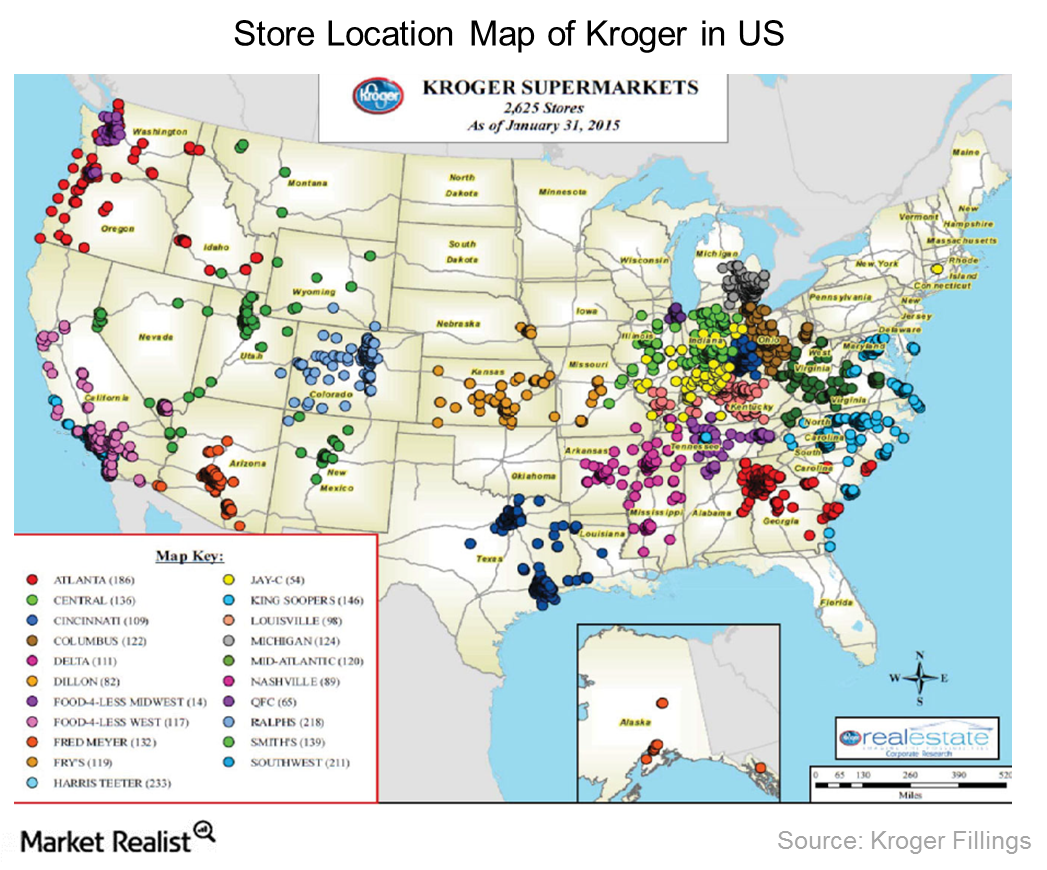
Possible Acquisition: Why Is Kroger Interested in The Fresh Market?
The Kroger Company (KR) might be seeking to acquire The Fresh Market (TFM). The Fresh Market’s (TFM) stock rose ~22% on Thursday, February 11, 2016, after the news of Kroger’s bidding hit the market.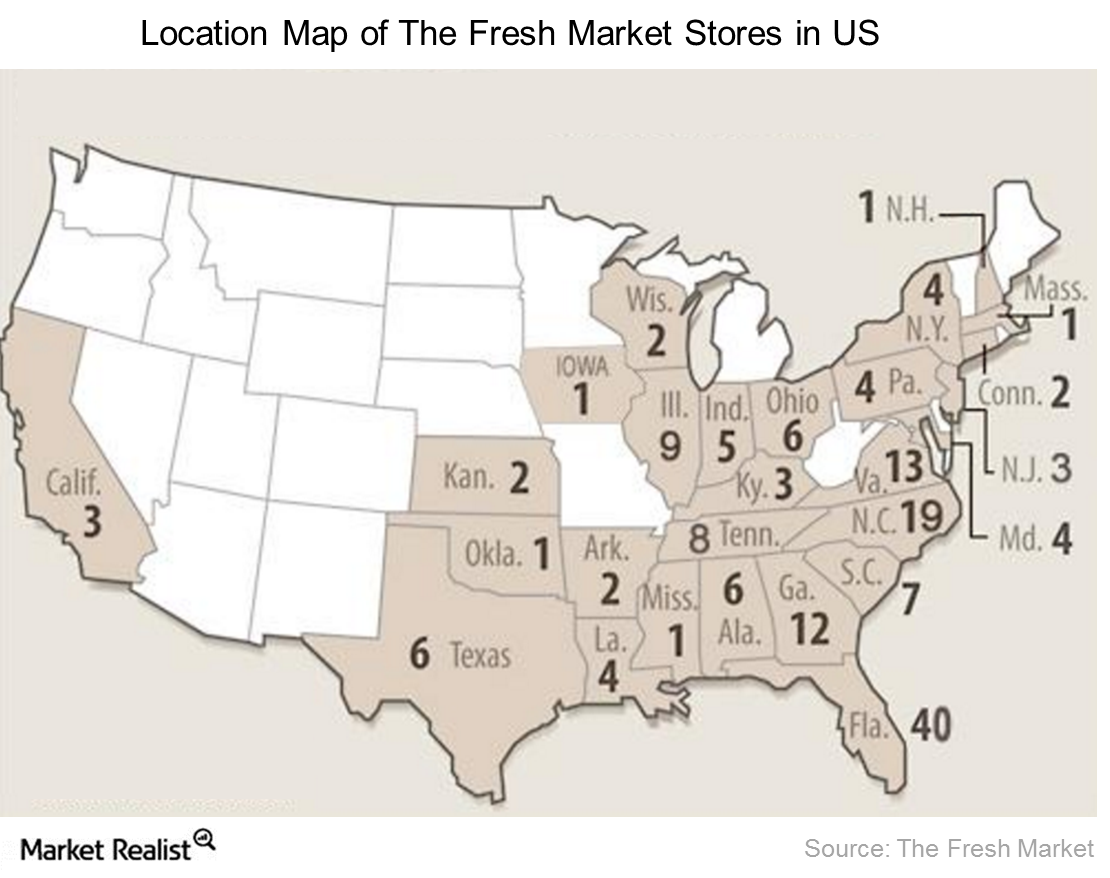
Where Is The Fresh Market Based and Where Is It Expanding?
The Fresh Market believes that it can achieve better returns by expanding in markets within or closer to its existing markets.
How Do The Fresh Market’s Stores Compare with Those of Its Peers?
As of October 25, 2015, The Fresh Market had 180 stores across 27 states.
What Initiatives Is Whole Foods Taking to Stay Competitive?
Whole Foods has developed the 365 format in order to compete with value-based organic food retailers like Trader Joes and mainstream retailers Wal-Mart.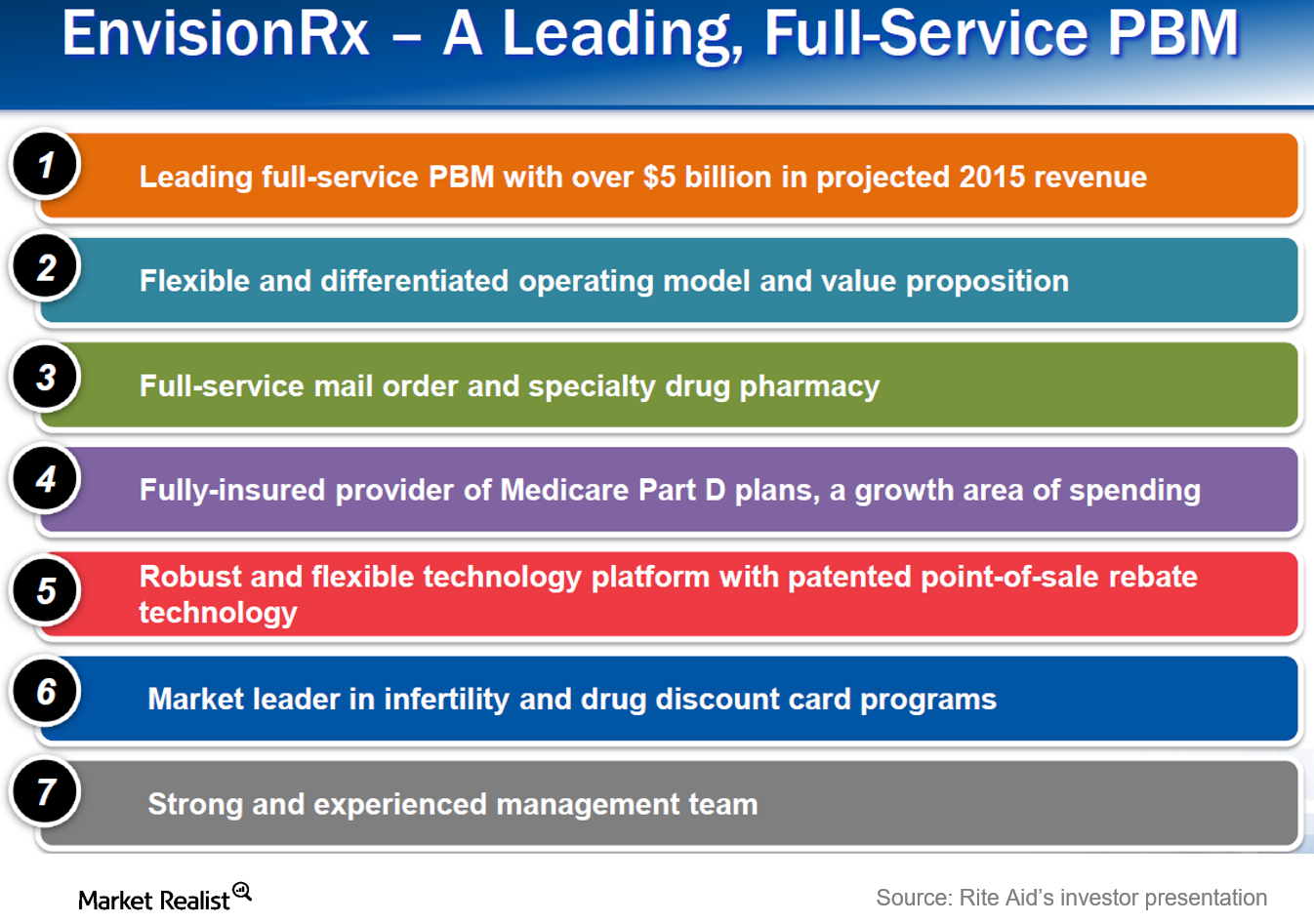
Upcoming Opportunities and Potential Threats for Walgreens Boots
In this part, we’ll discuss the company’s upcoming opportunities and potential threats.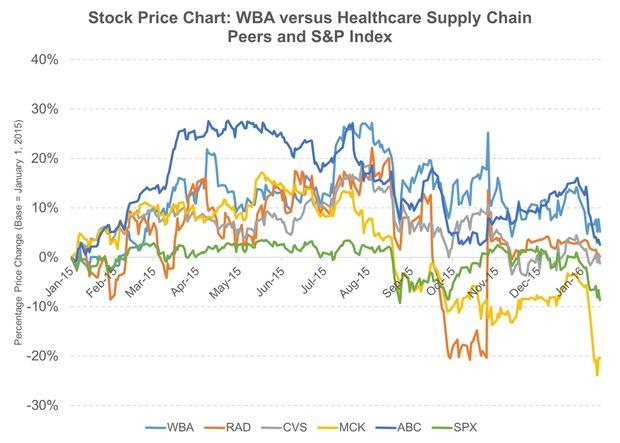
An Analysis of Walgreens Boots Alliance’s Stock Returns
Walgreen Boots Alliance’s (WBA) common stock trades on the NASDAQ under the symbol “WBA.”
Comparing the Pharmacy Giants: Walgreens versus CVS Health
Walgreens Boots Alliance (WBA) and CVS Health (CVS) largely dominate the US drug store market.
Porter’s Five Forces Analysis of the US Drugstore Industry
Porter’s five forces model is used to assess the nature of competition and attractiveness of an industry.
An Overview of the US Drugstore Industry
US drugstores typically generate revenues by selling prescription drugs, over-the-counter medications, health and beauty products, and general merchandise.
A Look at Walgreens Boots Alliance’s Retail Pharmacy USA Division
The Retail Pharmacy USA division is Walgreens Boots Alliance’s (WBA) largest revenue generator.
Walgreens Boots Alliance: Merger of Walgreens and Alliance Boots
Walgreens became a wholly owned subsidiary of Walgreens Boots Alliance after a merger.
Walgreens Boots Alliance: Segments and Geographic Footprint
Following the completion of the second-step transaction on December 31, 2014, Walgreens Boots Alliance reorganized its operations into three segments.
A Closer Look at the Highly Competitive Organic Food Industry
With the increasing focus on health and wellness, the organic food channel has grown at more than twice the pace of the conventional food channel.
A Porter’s Five Forces Analysis of Sprouts Farmers Market
Although Sprouts purchases from a large number of suppliers, the company is still dependent on these suppliers for a large part of their purchases.
A Closer Look at Sprouts Farmers Market’s Business Strategies
Sprouts has been expanding its private label menu by introducing new and innovative products. As of 3Q15, it offered more than 1,700 private-label items.
Sprouts Farmers Market’s Positioning in the US Supermarket Industry
Conventional supermarkets make up 65%, grocery and mass merchandisers make up 25%, and natural and gourmet make up 6% of the supermarket industry’s sales.
A Key Business Overview of Sprouts Farmers Market
Sprouts is a value player in the organic grocery sector, selling groceries at competitive prices from small-box stores averaging 28,000–30,000 square feet.
Newell Rubbermaid–Jarden Deal: Strategic Rationale
Strategic rationale of the deal Both Newell Rubbermaid (NWL) and Jarden (JAH) are US-based consumer products conglomerates operating in diverse industries, with presences in several global markets. Both companies have strong portfolios of leading brands that are number one or number two in their categories. The combined company will have a concentrated portfolio of brands, […]
SUPERVALU’s Strengths, Weaknesses, Opportunities, and Threats
It’s important for investors to understand SUPERVALU’s current strengths and weaknesses as well as its potential opportunities and threats.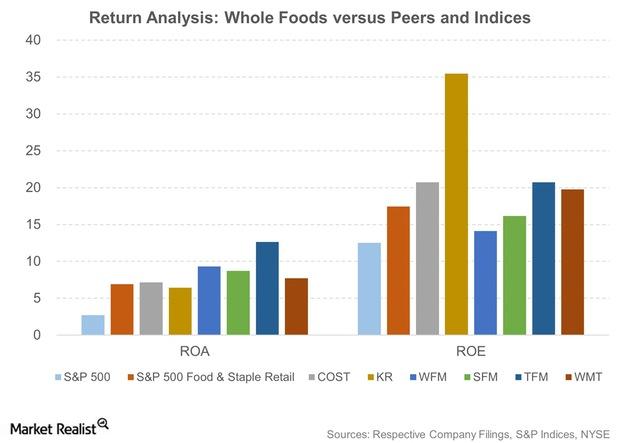
Analyzing Whole Foods’ Return on Investments
Whole Foods’ net margin was among the highest in its peer group in fiscal 2015. The 12-month trailing net margin for Whole Foods stood at 3.5%.
Whole Foods’ Low Sales Growth versus Impressive Margins
Whole Foods’ sales for fiscal 2015 earned $15.3 billion—a 8.4% rise over the previous fiscal year, and a 9.6% average rise over the past three fiscal years.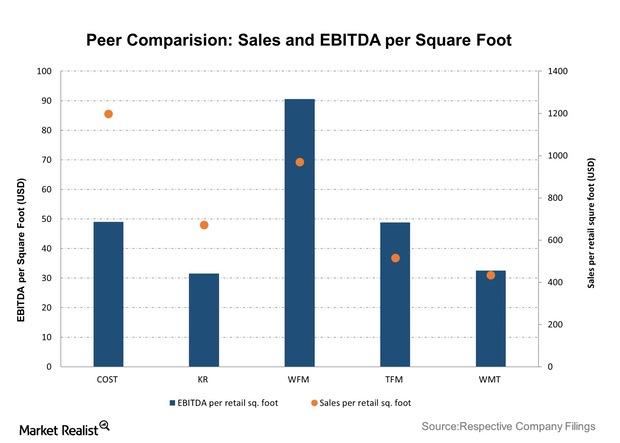
Analyzing Whole Foods’ Store Performance and Profitability
Whole Foods has only trailed Costco in per-foot sales metrics. Costco averaged more than $1100 between fiscal 2011 and fiscal 2015.
Gauging Whole Foods’ Positioning in the US Organic Food Industry
Organic products are no longer available solely at farmers’ markets and specialty stores but are now available at local and traditional grocery stores.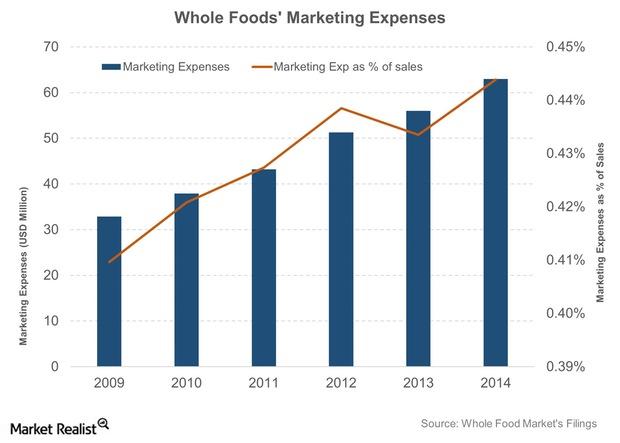
Evaluating Whole Foods’ Marketing and Purchasing Strategies
Whole Foods spends less on advertising and marketing than conventional supermarkets, relying on word-of-mouth recommendations and customer testimonials.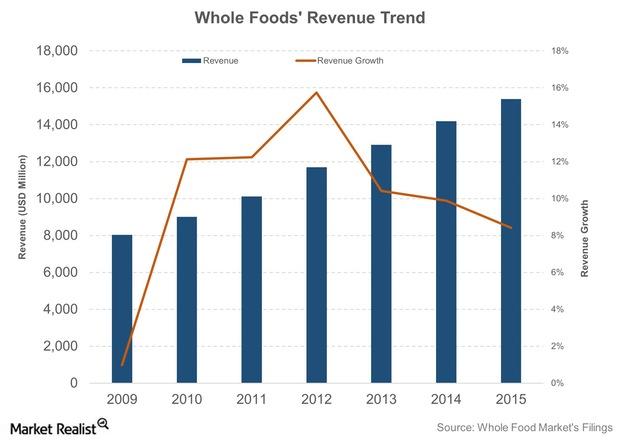
Introducing Whole Foods: America’s Organic Food Market
With 433 stores across the US, Canada, and the UK as of September 2015, Whole Foods has long been considered a synonym for organic and healthy food.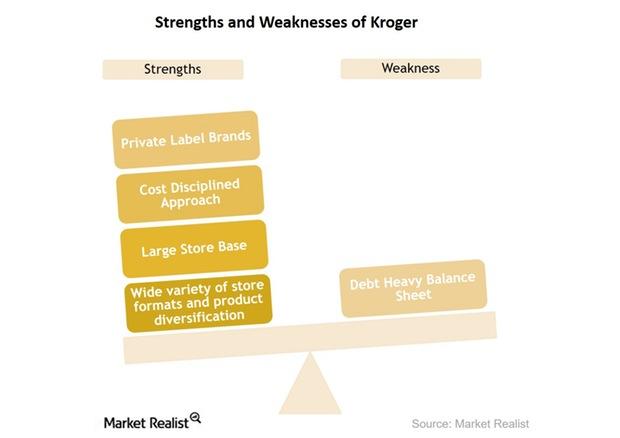
SWOT Analysis: Looking at Kroger’s Strengths and Weaknesses
We will do a SWOT analysis for Kroger (KR) and look at the strengths, weaknesses, opportunities, and threats for the company.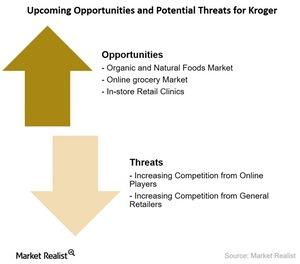
SWOT Analysis: Upcoming Opportunities for Kroger
Kroger (KR) is a well-established player in the natural foods market. The company offers over 15,000 natural and organic food items.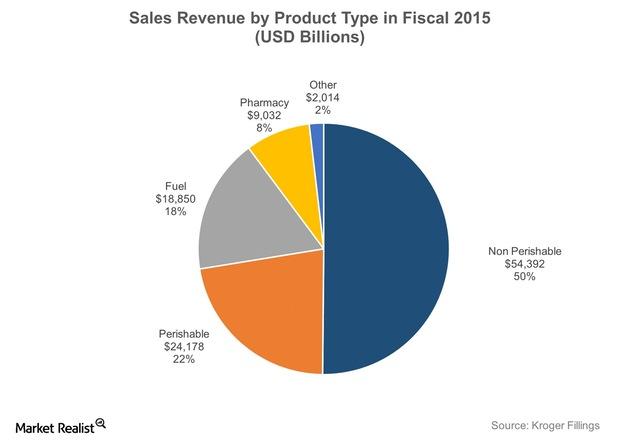
Kroger’s Fiscal 2015 Revenue at an All-Time High
Kroger’s (KR) revenue reached an all-time high of $108 billion in fiscal 2015, which ended January 31, 2015, up by 10.3% from fiscal 2014.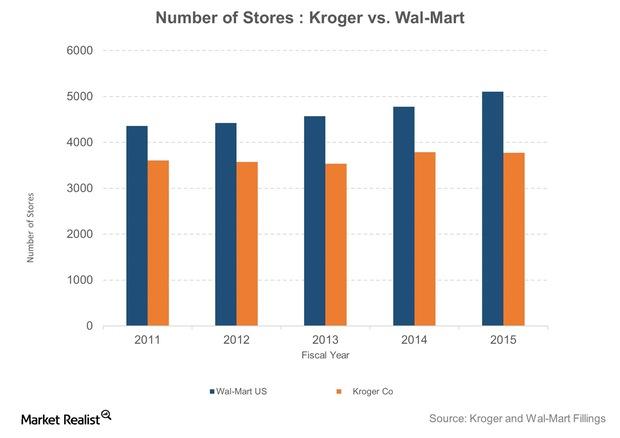
Efficient Supply Chain: Vital to Managing a Vast Store Network
Efficient supply chain management is vital to a retailers’ day-to-day operations. A good distribution network optimizes product freshness, reduces waste, and lowers costs.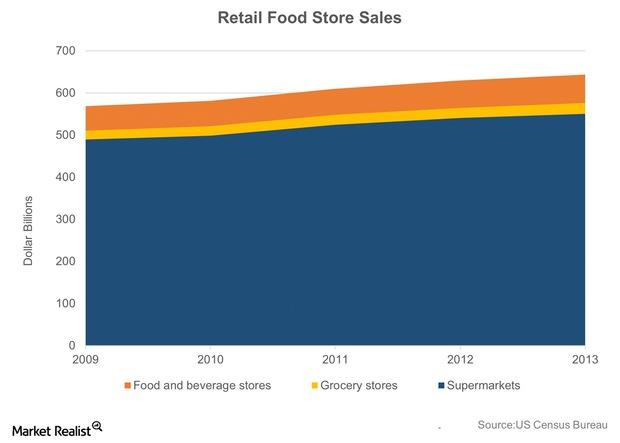
An Analysis of the US Grocery Market
In 2013, grocery stores accounted for 90% of the country’s food and beverage store sales, while supermarkets accounted for 95% of the total grocery store sales.
A Look at Supermarkets: Kroger’s Primary Business Segment
The Kroger Co. (KR) is the largest supermarket chain in the US by revenue, operating 2,625 supermarkets at the end of fiscal 2015, which ended January 31, 2015.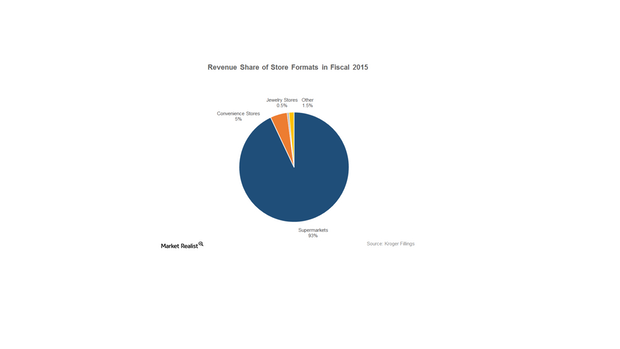
Kroger’s Store Formats and Product Offerings
Kroger operates in several store formats, offering its customers the option to shop in its stores in-person or online for delivery or pickup.
